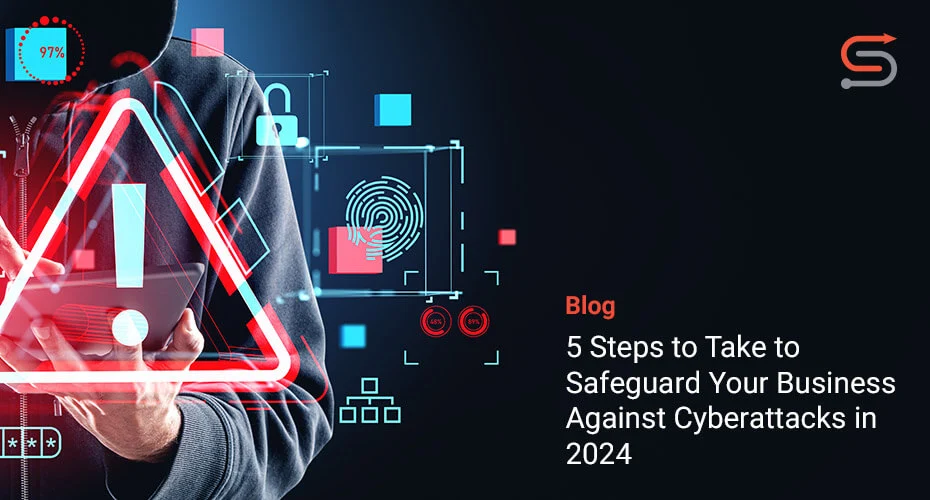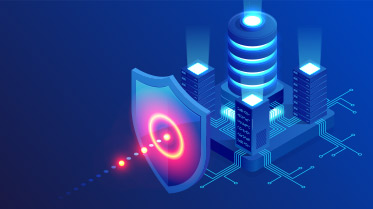So much is being said and done about cybersecurity. Yet, a single attack still can cripple even the biggest of organizations and sabotage their business operations in a jiffy. That’s what the recent cyberattacks in Las Vegas brought to the fore. And it’s not just the monetary losses that organizations encounter. The impact such attacks can have on business reputation and customer trust is beyond measure. So, what can you do to safeguard your business against cyberattacks? Read on as we disclose the top steps and showcase the value of partnering with a Managed Security Services Provider.

Strengthening Your Cybersecurity Posture – Top Action Items
Cyberattacks can come from anywhere in the world and can target organizations of any size and in any industry. From startups that have just begun their journey to established corporations that are leading the market, cybersecurity is a top priority for everyone.
But cybersecurity isn’t always about implementing innovative tools. Users can take several basic steps to safeguard themselves against attacks. If you want to strengthen your organization’s cybersecurity posture and boost your cybersecurity maturity, here are five action items you must take:
1. Ensure strong passwords
Every enterprise user recognizes the importance of strong passwords. Yet, many resort to using easy-to-remember passwords for various online accounts. Not only does this increase the risk of attacks, but also opens the (threat) window of opportunity for bad actors. Ensuring strong passwords is the first step to securing the business against cyberattacks. Employees should also be advised to use a strong password manager/vault to create and store unique passwords for all their online accounts.
2. Use multifactor authentication
Did you know? According to a study by Microsoft, more than 99.9% of accounts that are compromised don’t have multifactor authentication enabled. Just like strong passwords, multifactor authentication (MFA) is an extremely effective way to protect your organization from cyberattacks. By requiring users to enter a code from their phone in addition to their password, MFA adds an extra layer of security. It enables stronger authentication while reducing the risk of account takeovers and breaches.
3. Educate and inform
Cybersecurity teams must also continuously educate and inform the workforce about cybersecurity. With social engineering attacks on the rise, employees should be informed about the different ways in which hackers can trick them into revealing confidential information or performing actions that compromise security. They must also be asked to think before they click, especially since malicious emails or links can come from anyone, even people they know. Employees should be trained to identify suspicious emails, text messages, or phone calls. And if they are unsure whether something is legitimate, it’s best not to click on the link or provide any personal information.
4. Verify and validate
Employees should also be instructed to always verify the identity of the person or entity they are interacting with, especially before sharing sensitive information. Since criminals often use personal or financial information to commit identity theft or other crimes, it is advisable to avoid oversharing information. Organizations must also take an automated and continuous approach to test the efficacy of their security controls against cyber threats and update practices as required.
5. Exercise safe practices
Cybersecurity isn’t a one-time activity. It demands a cultural shift that puts security at the foundation of the business. To ensure continuous and sustained cybersecurity, everyone needs to exercise safe practices. Keeping enterprise tools up to date, being careful about what information employees share on social media, and only downloading software from legitimate sources are crucial. The workforce should also be advised against clicking on links in pop-up banners and reaching out to the cybersecurity helpdesk, when in doubt.
Safeguarding Your Business Against Cyberattacks in 2024 – The Value of a Partner
Malware. Phishing. Social engineering. The tools and techniques today’s attackers use to incapacitate businesses are many. As bad actors innovate their attack mechanisms, organizations must take a careful and strategic approach to cybersecurity.
While it is impossible to ensure 100% protection against evolving cyberattacks, embracing these tips can surely help minimize their impact and accelerate threat response. As the cybersecurity skills gap constantly widens, with the current cybersecurity workforce shortage at 4 million, opting for expert guidance is the need of the hour.
Partnering with a Managed Security Services Provider is a sure-shot way of safeguarding your business against evolving attacks, protecting business, employee, and customer data, and upholding customer trust and business reputation.
About the Author
Brandon Woolsey is the Cybersecurity Professional Services Manager at Synoptek. He excels in owning system performance, security, and strategic alignment. With a project management focus, he prioritizes IT infrastructure, cybersecurity, and risk mitigation. His credentials include an MS in Information Security Management, numerous certifications, and expertise in process improvement (Six Sigma, Agile, SOX, etc.).







